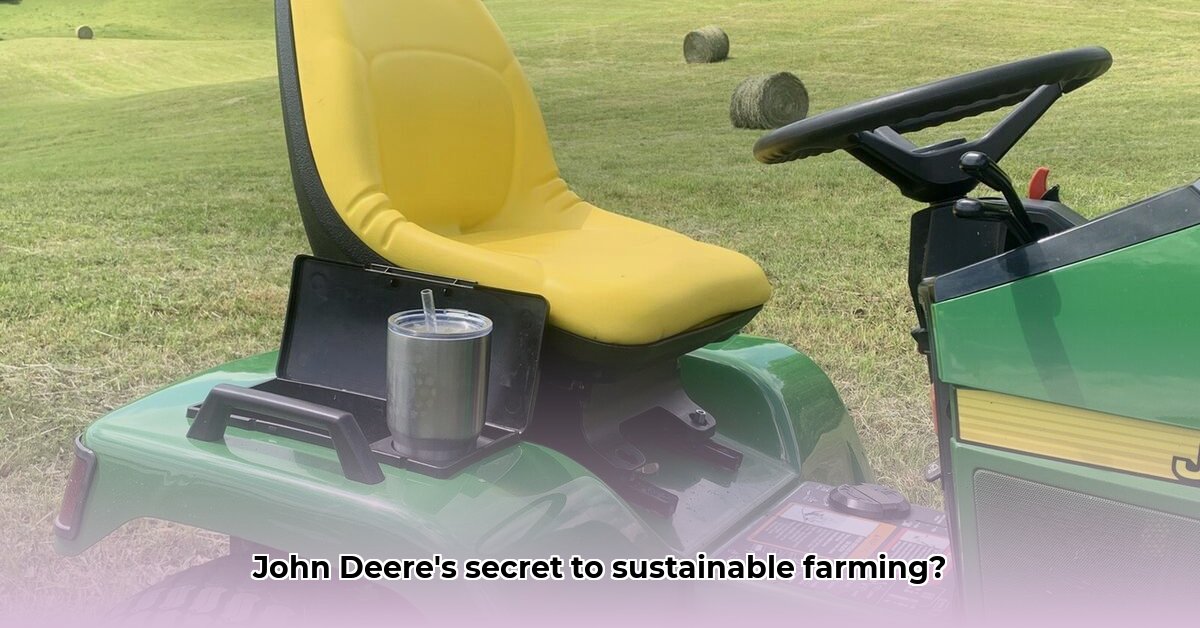
A Case Study in Supply Chain Transparency and Sustainability
The seemingly insignificant John Deere tractor cup holder (part number AM131898) offers a compelling case study in the complexities of sustainable agriculture. While readily available for purchase, the journey of this simple plastic component from creation to disposal reveals a significant lack of transparency regarding its environmental impact. This case study analyzes the cup holder's supply chain, assesses its sustainability, and proposes actionable recommendations for stakeholders across the industry. For used tractor values, check out this helpful resource: John Deere Values.
Supply Chain Analysis: Unveiling the Unknown
The widespread availability of the AM131898 cup holder suggests a robust supply chain. However, crucial details regarding its production and lifecycle remain opaque. While the point of sale is readily apparent, the origins of its constituent materials remain largely undefined. This lack of information creates a significant barrier to understanding its true environmental footprint. Questions regarding energy consumption during manufacturing, water usage, waste generation, and the sourcing of raw materials all remain unanswered. This opacity is not unique to this specific part; it represents a broader trend within agricultural equipment supply chains. How can we accurately assess sustainability without this information?
Sustainability Assessment: The Need for a Life Cycle Assessment (LCA)
A comprehensive Life Cycle Assessment (LCA) is essential for a complete understanding of the AM131898 cup holder's environmental impact. An LCA provides a detailed analysis of the product's entire lifecycle, from raw material extraction and manufacturing to transportation, use, and disposal. Currently, the absence of a publicly available LCA for this component prevents an accurate assessment of its environmental footprint. Crucially, this lack of data highlights the wider issue of inadequate transparency within the agricultural equipment supply chain. What steps can be taken to establish a more transparent and sustainable framework?
Actionable Recommendations: Collaboration for a Greener Future
Addressing the sustainability challenges presented by the John Deere cup holder requires a collaborative effort involving multiple stakeholders:
John Deere: Publish a detailed LCA for the AM131898 cup holder within the next year. Commit to using recycled and/or plant-based plastics in future production runs within three years; implement a closed-loop recycling program for the cup holder within five years. This would significantly reduce the environmental burden.
Farmers/Consumers: Demand greater transparency regarding the sustainability credentials of agricultural equipment components. Actively support manufacturers committed to environmentally responsible practices.
Regulators: Implement stricter regulations mandating LCAs for all agricultural equipment parts within two years. Develop robust policies that incentivize sustainable manufacturing and responsible end-of-life management of components.
Suppliers: Prioritize the sourcing of sustainable materials and invest in environmentally friendly manufacturing processes. Collaborate with manufacturers to design products for improved recyclability and implement circular economy models.
Conclusion: Small Part, Big Impact
The John Deere tractor cup holder serves as a potent reminder that even seemingly insignificant components play a role in the larger context of sustainable agriculture. The lack of transparency surrounding its production and disposal underscores the urgent need for increased data availability and a collaborative approach towards environmental responsibility. By implementing the recommendations outlined above, the agricultural equipment sector can move toward a more sustainable and transparent future, improving environmental impact and ensuring the long-term viability of farming practices. The future of sustainable agriculture hinges on a commitment to transparency and collaborative action at every point in the supply chain.